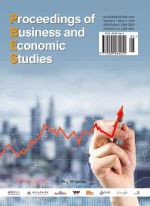A Review of the Research on Supply Chain Relationships and Corporate Finance
Abstract
The interaction between supply chain relationships and corporate finance has become a focal issue in academic and practical circles, especially under the dual drivers of globalization and marketization. This paper systematically reviews existing research on this topic, covering theoretical foundations from perspectives such as agency theory, stakeholder theory, and co-opetition game theory, which explain the nature of customer-supplier relationships. It also combs through empirical studies from four core angles: competition-cooperation, signal transmission, spillover effects, and information transfer, summarizing findings on how supply chain relationships impact corporate investment, financing, operations, and performance, as well as existing controversies. The aim is to clarify the research context, identify theoretical and empirical gaps, and provide theoretical support and direction for deepening future research on supply chain and corporate finance.
References
Freeman RE, Reed DL, 1983, Stockholders and Stakeholders: A New Perspective on Corporate Governance. California Management Review, 25(3): 88–106.
Chu W, Tian X, Wang C, 2019, Geographic Proximity and Supplier Innovation. Journal of Financial Economics, 134(3): 646–664.
Campello M, Gao Y, 2017, Customer Concentration and the Cost of Private Debt. Journal of Financial and Quantitative Analysis, 52(4): 1541–1572.
Dhaliwal DS, Judd SJ, Serfling M, et al., 2016, Customer Concentration, Idiosyncratic Risk, and Cost of Equity. The Accounting Review, 91(3): 775–803.
Patatoukas PN, 2012, Customer-Base Concentration: Implications for Firm Performance and Capital Markets. The Accounting Review, 87(2): 363–392.
Irvine PJ, Park JC, Yildizhan B, 2016, Customer–Supplier Relationships and the Long-Run Stock Performance of Acquiring Firms. Journal of Financial Economics, 119(1): 182–208.
Hui KW, Klasa S, Yeung PE, 2018, Customer Concentration and Corporate Payout Policy. Journal of Financial Economics, 127(3): 583–602.
Oliver O, 1979, The Collective Construction of Organizational Commitment. Administrative Science Quarterly, 24(2): 253–276.
Graham JR, Harvey CR, Rajgopal S, 2005, The Economic Implications of Corporate Financial Reporting. Journal of Accounting and Economics, 40(1–3): 3–73.
Bowen RM, Ducharme LL, Shores DB, 1995, Stakeholders’ Implicit Claims and Accounting Method Choice. Journal of Accounting and Economics, 20(2): 1–24.
Dou Y, Hope OK, Thomas WB, et al., 2013, Does Earnings Management Affect Suppliers and Customers? Journal of Accounting Research, 51(5): 1151–1188.
Kale JR, Shahrur H, 2007, Corporate Capital Structure and the Characteristics of Supplier and Customer Markets. Journal of Financial Economics, 85(2): 321–365.
Banerjee S, Dasgupta S, Kim Y, 2008, Supplier–Customer Relationships and the Stakeholder Theory of Capital Structure. Journal of Financial and Quantitative Analysis, 43(4): 1099–1125.
Hertzel MG, Li K, Officer MS, et al., 2008, The Cost of Debt of a Distressed Customer. Review of Financial Studies, 21(6): 2609–2642.
Fee CE, Thomas S, 2004, Sources of Gains in Horizontal Mergers: Evidence from Customer, Supplier, and Rival Firms. Journal of Financial Economics, 74(3): 423–466.
Shahrur H, 2005, Corporate Governance and the Interface between Corporate and Investor Taxes. Journal of Financial Economics, 77(2): 415–451.
Brown GW, Fee CE, Thomas S, 2009, Corporate Leveraged Buyouts and Private Equity: Do They Create Value? Journal of Financial Economics, 93(3): 329–357.
Carvalho VM, 2021, Aggregate Supply Chain Disruptions. American Economic Review, 111(5): 1633–1673.
Chiu PC, Teoh SH, Tian F, 2019, Customer Risk Disclosures and Supplier Investment Efficiency. The Accounting Review, 94(5): 107–134.
Chen Q, Cheng Q, Lo K, 2019, Customer Earnings Quality and Supplier Investment Efficiency. Contemporary Accounting Research, 36(3): 1422–1455.
Cho S, Lee J, Pfeiffer RJ, 2020, Supply Chain Information Externalities and Voluntary Disclosure. Review of Accounting Studies, 25(2): 661–701.
Olsen CA, Dietrich JR, 1985, Evidence of Information Transfers in the Retail Industry. Journal of Financial Economics, 14(1): 57–74.
Cheng Q, Eshleman JD, 2014, Customer–Supplier Relationships and the Association between Accounting Conservatism and Cost of Equity Capital. The Accounting Review, 89(3): 939–970.
Lior M, Oguzhan T, 2010, Economic Links and Predictable Returns. Journal of Financial Economics, 95(3): 381–398.
Madsen EA, 2015, Customer Returns and the Cross-Section of Stock Returns. Journal of Financial Economics, 115(2): 272–289.
Guan Y, Wong CS, Zhang T, 2014, Analyst Coverage and the Efficiency of Corporate Investment. The Accounting Review, 89(3): 971–1001.
Bayer PJ, Danielova A, Srinivasan S, 2017, Customer Disclosures and Analyst Forecasts. The Accounting Review, 92(3): 141–166.
Johnstone KM, Li C, Rupley E, 2014, Audit Effort, Client Pressure, and Abnormal Accruals. The Accounting Review, 89(2): 685–715.

